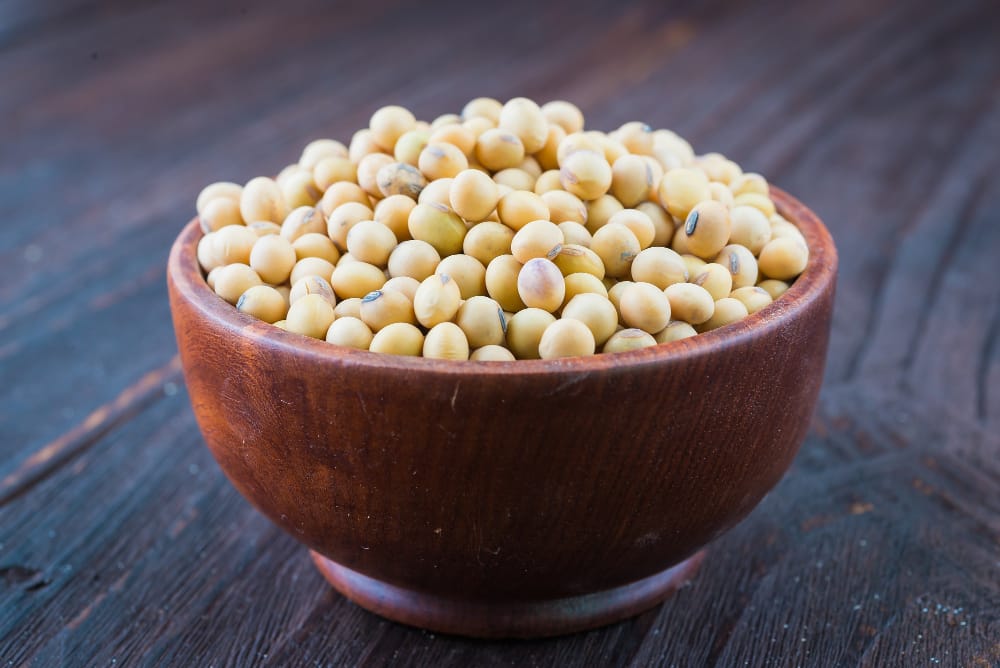Fat-free soybean meal is a significant and cheap source of protein for animal feeds and many packaged meals. For example, soyabean products, such as textured vegetable protein, are ingredients in many meat and dairy substitutes. The beans contain significant amounts of phytic acid, dietary minerals and
B vitamins. Soy vegetable oil, used in food and industrial applications,is another product of processing the soybean crop. Traditional unfermented food uses of
soybeans include soy milk, from which tofu and tofu skin are made. Fermented soy foods include soy sauce, fermented bean paste, naito, and tempeh.
Together, protein and soybean oil content account for 56% of dry soybeans by weight (36% protein and 20% fat). The remainder consists of 30% carbohydrates, 9% water and 5% ash. Soybeans comprise approximately 8% seed coat or hull, 90% cotyledons and 2% hypocotyl axis or germ.

